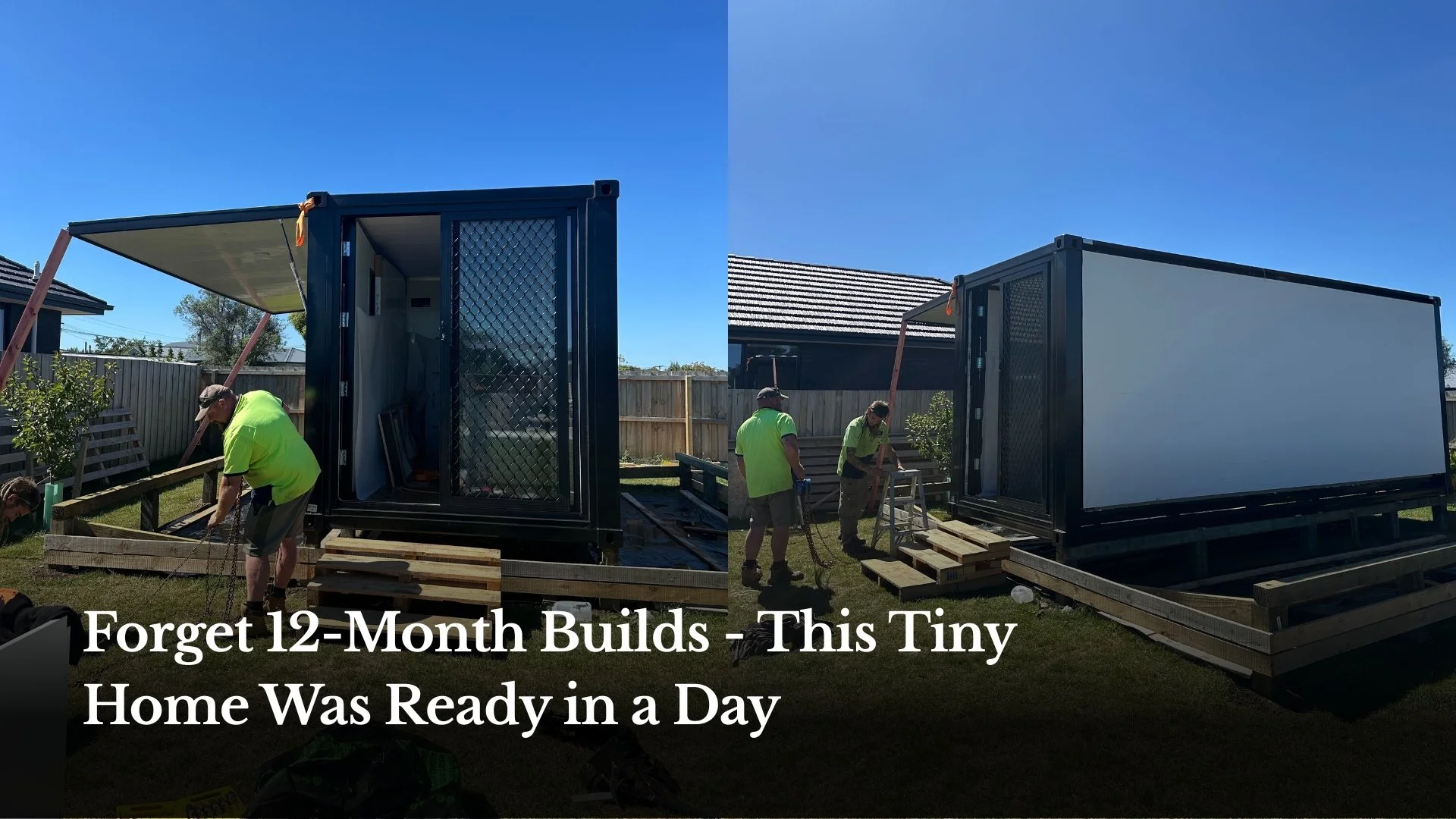Tiny Home Weekly is NZ’s independent source for prefab housing news, guides & insights.
LIFESTYLE | MODERN LIVING
Last updated: August 21, 2025
Forget the Quarter Acre Dream - Why More Kiwis Are Building Their Own Modern Retreats Instead
The Kiwi dream used to be simple: quarter acre section, three-bedroom home, white picket fence.
But times have changed. Today, more New Zealanders are chasing a different kind of dream - one that’s smaller, smarter, and more flexible.
Across the country, you’ll see sleek, modern cabins tucked into backyards, lifestyle blocks, and holiday spots. Far from being a compromise, they’re becoming the ultimate lifestyle upgrade.
Pictured: The new SkyPod is being touted as one of the most luxurious (and highest spec’d) tiny homes in New Zealand.
1. Housing That Fits Modern Lifestyles
For many families, the traditional home model doesn’t fit anymore. Remote work, rising multi-generational living, and the push for extra income have created new needs.
Instead of building expensive extensions or buying bigger houses, Kiwis are adding standalone, fully-equipped spaces that can flex as life changes:
A quiet home office away from the kids
Guest suites for visiting family
Private teenage retreats
Or fully kitted Airbnb units that pay for themselves
Pictured: The Studio – a portable 13m² cabin available at expanders.co.nz .
2. Design Has Become Just As Important As Function
Forget the old “shed on wheels.” Today’s tiny homes look more like architectural builds than cabins.
Large windows, timber finishes, pitched roofs, and tiled bathrooms are standard in many premium models. Some even rival high-end apartments in style - just in a fraction of the footprint.
And while cheaper prefabs still flood the market, many Kiwis are leaning towards design-led builds that add real value to their property.
True to the New Zealand DIY mentality, Kiwis are adding their own modifications such as roofs and decking.
3. Freedom to Live Anywhere
Perhaps the biggest appeal? Mobility.
Portable homes can be placed on a farm block, tucked into a coastal site, or added to a backyard - all without the headaches of long consents and endless delays.
Want to relocate later? Just pick up and move.
Want to sell? It’s an asset you can onsell without waiting for the property market to move.
This kind of flexibility simply doesn’t exist with traditional builds.
4. The Creative Ways Kiwis Are Using Them
We spoke with owners across NZ, and the uses are as diverse as the people buying them:
Yoga and wellness studios in semi-rural sections
Design-led Airbnbs on lifestyle blocks
Starter homes for young couples saving for land
Retreats for retirees downsizing without giving up comfort
It’s not just about downsizing - it’s about designing a lifestyle that actually works.
5. Choosing Homes Built for NZ Conditions
Of course, not all tiny homes are built equally. Many cheap imports look good online but struggle against NZ’s harsh weather and strict compliance rules.
That’s why smart buyers are looking at local, trusted companies who can back up what they sell.
Expanders has quietly become one of the country’s top-rated suppliers for functional, modern portables – offering everything from compact studios to multi-room setups, all NZ-certified and locally supported.
And for those chasing a premium, architectural feel, Skypod delivers architectural design with high-quality finishes and is overengineered to exceed NZ building code.
Both ranges reflect the shift we’re seeing: Kiwis want portable living, but they don’t want to compromise on quality, compliance, or design.
“We’d seen Expanders around for months and finally checked them out. Best decision we made.”
The SkyPod is designed by NZ-based engineers BoW, EcoTech and award-winning architects Young + Richards.
The Bottom Line
The quarter-acre dream may be fading, but what’s replacing it is arguably better.
Portable homes are giving Kiwis choice, control, and style in a housing market where those things are rare.
And with affordable, customisable options like Expanders and design-focused, fully-certified builds like Skypod , buyers don’t have to choose between affordability and aesthetics.
For many, it’s not just a smaller home. It’s a smarter life.
Join 5,000+ Kiwis Getting Weekly Tiny Home Insights
Thinking About a Tiny Home?
Here’s a free guide to help you compare your options.
✅ Expert tips from Industry Insiders
✅ Real delivery timelines
✅ 5 warning signs of a bad prefab seller













